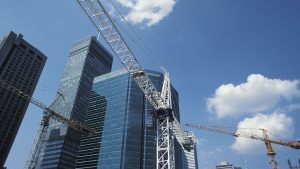The condominium collapse in Surfside, Fla. in June has raised questions concerning the likelihood of a similar tragedy in Canada. It’s a complex question that hits many issues: building department oversight, developer aggression, contractor shortcuts and condominium governance.
The exact cause of the Surfside collapse will be the subject of detailed forensic analysis over several years, a task made difficult due to the shattered natured of the structural remains and the challenges of reconstructing the timing of the physical failure.
However, the problems likely began years before. The New York Times reports Surfside project developers aggressively pursued changes to the building after construction had already begun.
Specifically, they wanted to add an extra floor to each of the two condominium towers. Despite objections of town officials concerning structural matters and violation of height limitations, “records show that in the face of an intense campaign that saw lawyers for the developers threaten lawsuits and argue with officials deep into the night, the opposition folded — and the developers got their way.”
The Times also points out that although, “there is no indication that the catastrophic collapse of the Champlain Towers South building in June was related to the tacked-on penthouse,” it only adds to suspicions concerning building shortcuts, such as less rebar used in structural columns than was originally specified by engineers.
The Wall Street Journal reports engineers have also discovered that no waterproofing was installed to protect the rebar and concrete that supported the structure.
Even so, action could have been taken several years before to correct any noted deterioration of the building.
In 2018, the board of directors of the Surfside condominium received an engineering report that cited “major structural damage” in areas now under forensic investigation. Cost-sharing for individual owners to repair or mitigate the reported damage would have been expensive, from $80,000 to $200,000 each depending on unit size.
The board balked, perhaps due to costs or perhaps because the report did not suggest any imminent structural collapse.
This series of events and decisions highlights the critical differences between jurisdictions like Ontario and Florida when it comes to condominium governance, says David Taub, of law firm Robins Appleby LLP.
Taub writes the 2018 Surfside report was carried out due to Miami-Dade County requirements for building inspections when buildings reach 40 years of age. That’s very different than the situation in Ontario, he says.
“Here, condominiums must establish and maintain a reserve fund, which must be used only for the purpose of major repairs and replacement of the common elements and assets of the condominium.”
That reserve fund must be established within the first year of condominium registration and its size determined by further inspection.
“Thereafter, the reserve fund study must be updated every three years, giving ownership a moving picture of the state of repairs and the rate at which building systems are deteriorating.”
In other words, there would have been several more inspections of an Ontario 40-year-old condominium — at least every three years — versus the single inspection required in Miami-Dade. Furthermore, the condominium reserve fund would have had ongoing funding infusions and expenses based on the recommendations of these regular reports.
The result, therefore, would be startlingly different. Structural issues would be identified much earlier, repairs would perhaps be smaller in scope, and funding would be on hand to avoid any sudden, massive calls for cash as occurred in Florida.
As Taub writes, “Ontario forces condominiums to invest in safety measures which will not always be necessary. There is a price for safety,” says Taub.
On the other hand, Florida’s once-every-40-years inspection regime allowed structural problems to fester, with the cost of repairs increasing in parallel. Many owners would have been forced into a fire-sale situation, causing them to lose most of their equity in their condominiums.
So instead, the repairs were not undertaken and the building collapsed. Ultimately the courts will decide if owners will receive any compensation at all.
John Bleasby is a Coldwater, Ont.-based freelance writer. Send comments and Legal Notes column ideas to editor@dailycommercialnews.com.










Recent Comments
comments for this post are closed